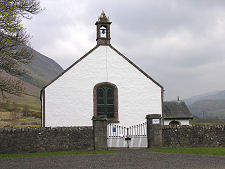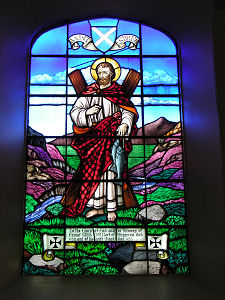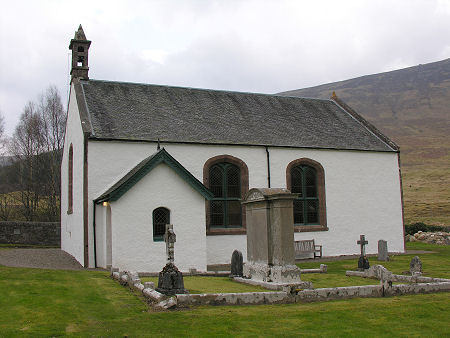 Glenlyon Church |
Glenlyon Church stands in the tiny hamlet of Innerwick, about half way along the 25 mile length of Glen Lyon. It was built a little way to the south of the road through the glen near the Glen Lyon war memorial, and is clearly visible from it.
The church was built in 1828 with government funds provided under an 1823 Act of Parliament "for building additional places of worship in the Highlands and Islands of Scotland". The best known outcome of this act was a series of standardised T-plan churches built by Thomas Telford. Less well known were the standardised churches built by the architect William Thomson. These were rather simpler and more basic (and, presumably, cheaper) than Telford's churches, and were in the shape of a simple rectangular box.
Glenlyon Church almost retains its original shape, though a porch was added to the south-west corner and a small vestry was added to the north end of the east gable, both during a major renovation of the church undertaken in 1898.
Internally, the church is an attractive blend of light painted walls and warm coloured woodwork. The pews and the pulpit were installed during the 1898 renovation. The communion table dates back to 1914 and initially stood in the Rosehall United Free Church in Edinburgh. The west end of the interior is divided from the rest by a wooden screen placed here in 1965.
Another relatively recent addition to the church is the stained glass window in the east gable, above the communion table. This was added in 1960 and was given to the church by the Wills family who at the time owned Meggernie Castle and estate. It carries the inscription "To the Glory of God and in Memory of Ernest Wills, 3rd Bart of Meggernie, died 1958, and of his wife Maud, died 1953."
On view in a niche in the porch is St Adamnan's (or St Adomnán's) Bell. It is named after Adomnán, Abbot of Iona from 679 to 704. There are suggestions that Adomnán visited Glen Lyon on a number of occasions en route from Iona to the Pictish kingdom of Atholl, and the bell is one of a number of objects named after or dedicated to him in the area. Another is St Adomnán's Cross, which stands on the south side of the road through the glen at Camusvrachan, a little over two miles east of the church. The bell is a hand-bell and is thought to date back to the 700s. It was found in the graveyard of the ancient St Brandon's Chapel in Glen Lyon. A very similar bell is on display at Fortingall Church.
Glenlyon Church is surrounded by its graveyard. None of the gravestones carry dates from before 1855, though one monument, to a number of members of the extended Beech family, is interesting.
 The Interior of the Church |

|
|
|
Visitor InformationView Location on MapGrid Ref: NN 588 475 What3Words Location: ///signs.lemons.ruling |
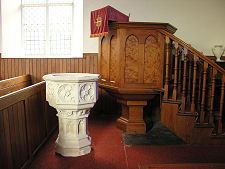 The Pulpit and the Font |
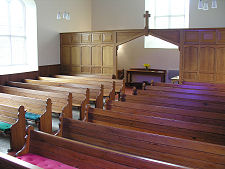 The West End of the Church |
 St Adomnán's Bell |
